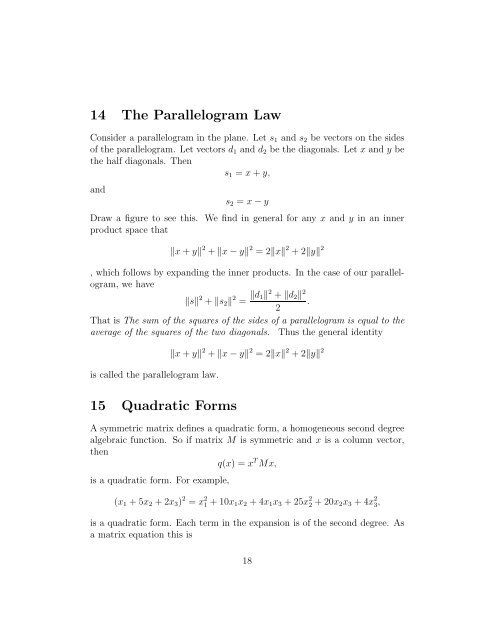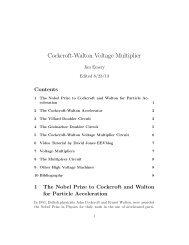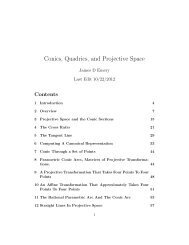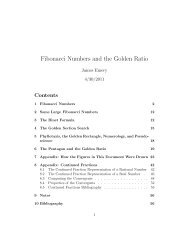Topics In Linear Algebra and Its Applications - STEM2
Topics In Linear Algebra and Its Applications - STEM2
Topics In Linear Algebra and Its Applications - STEM2
You also want an ePaper? Increase the reach of your titles
YUMPU automatically turns print PDFs into web optimized ePapers that Google loves.
14 The Parallelogram LawConsider a parallelogram in the plane. Let s 1 <strong>and</strong> s 2 be vectors on the sidesof the parallelogram. Let vectors d 1 <strong>and</strong> d 2 be the diagonals. Let x <strong>and</strong> y bethe half diagonals. Thens 1 = x + y,<strong>and</strong>s 2 = x − yDraw a figure to see this. We find in general for any x <strong>and</strong> y in an innerproduct space that‖x + y‖ 2 + ‖x − y‖ 2 = 2‖x‖ 2 + 2‖y‖ 2, which follows by exp<strong>and</strong>ing the inner products. <strong>In</strong> the case of our parallelogram,we have‖s‖ 2 + ‖s 2 ‖ 2 = ‖d 1‖ 2 + ‖d 2 ‖ 2.2That is The sum of the squares of the sides of a parallelogram is equal to theaverage of the squares of the two diagonals. Thus the general identityis called the parallelogram law.‖x + y‖ 2 + ‖x − y‖ 2 = 2‖x‖ 2 + 2‖y‖ 215 Quadratic FormsA symmetric matrix defines a quadratic form, a homogeneous second degreealgebraic function. So if matrix M is symmetric <strong>and</strong> x is a column vector,thenq(x) = x T Mx,is a quadratic form. For example,(x 1 + 5x 2 + 2x 3 ) 2 = x 2 1 + 10x 1 x 2 + 4x 1 x 3 + 25x 2 2 + 20x 2 x 3 + 4x 2 3,is a quadratic form. Each term in the expansion is of the second degree. Asa matrix equation this is18










